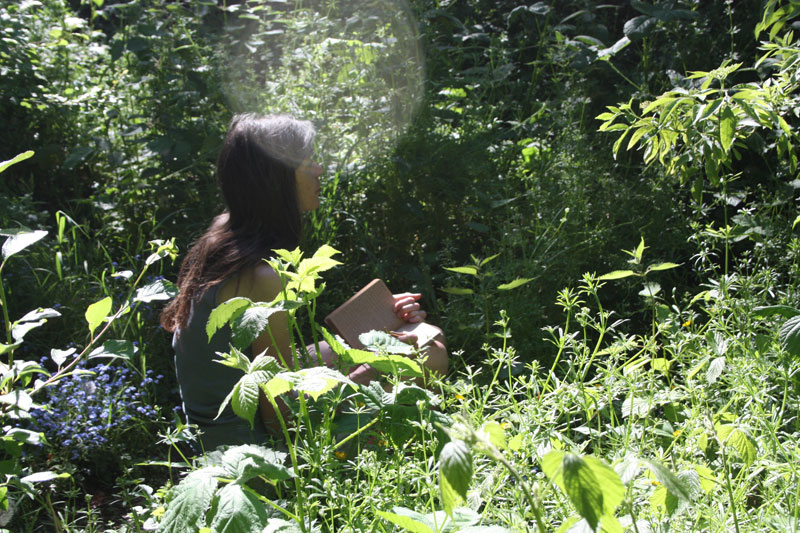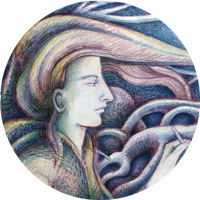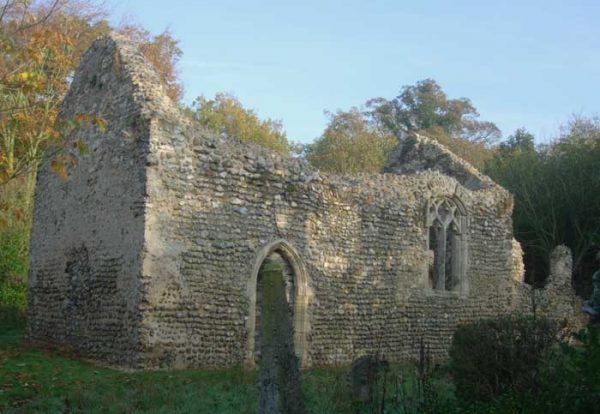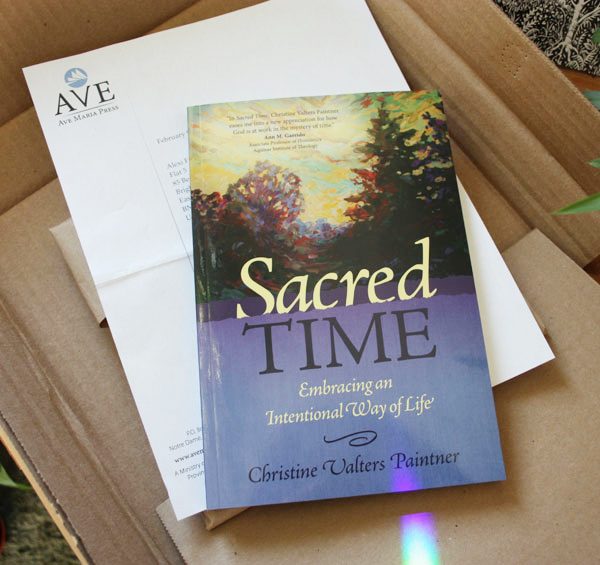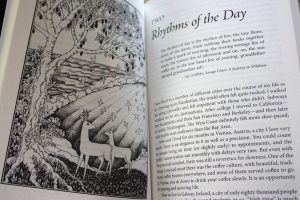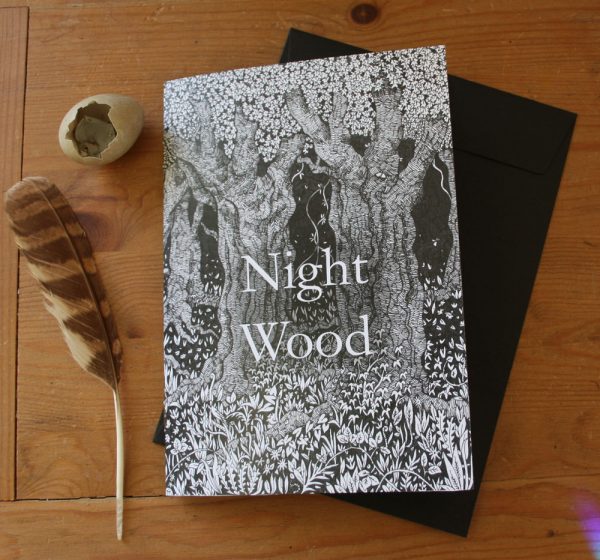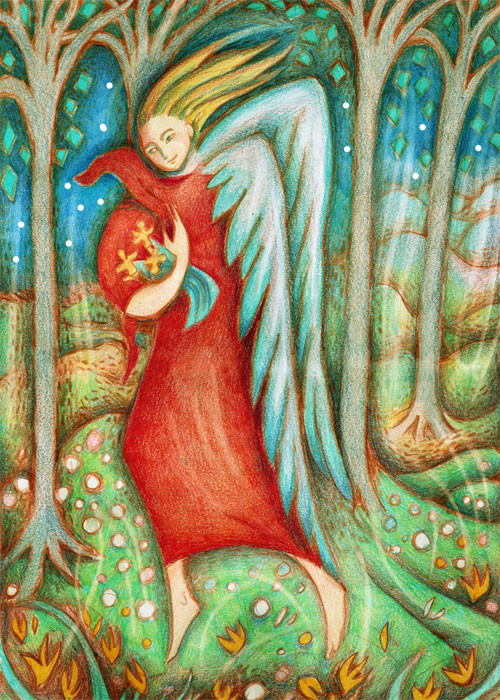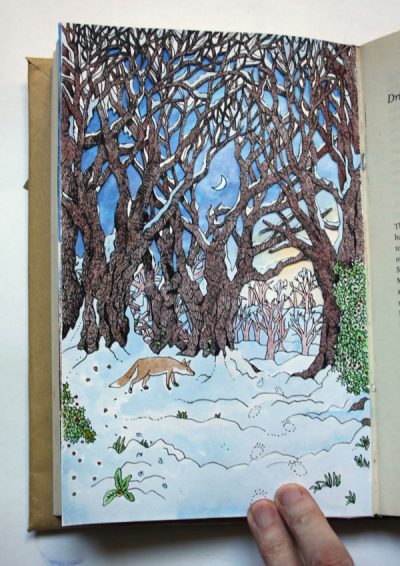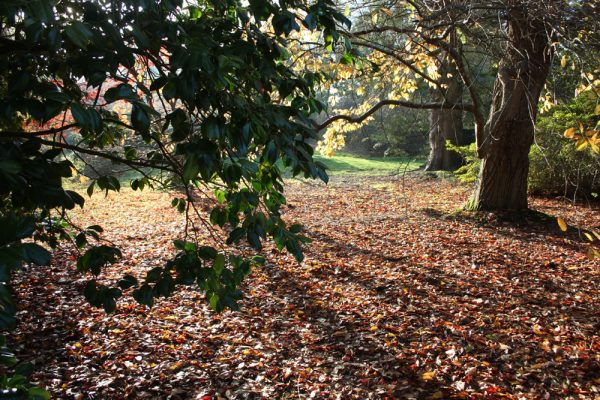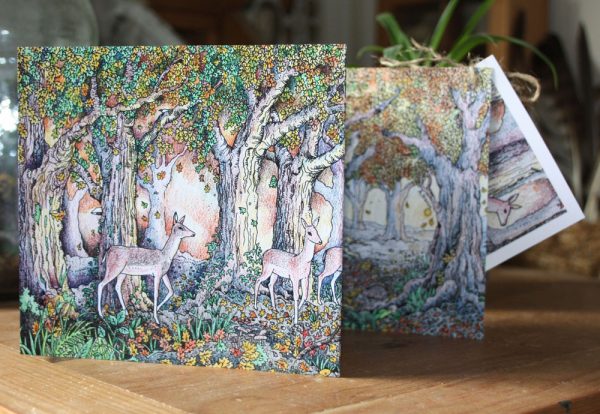It hasn’t been a particularly good summer. Right now I’m listening to the wind whipping around the garden, tossing the trees and moaning with an oceanic roar. Many leaves have come down and my courgettes lean over pathetically. They don’t stand much chance. I’m keeping home, partly because the weather hasn’t invited me out, but also, Kevin has hurt his knee so is confined to the house. That’s OK though, staying close to home is what I want right now.
However, this spring and summer, when the weather has been good, I’ve taken a few solo walks from home into the countryside around Brighton. I thought it might be a good idea to document my walks with photos and notes, but also more impressionistically with a sketchbook. I’m in awe of some people’s sketchbooks – how I’d love to be able to make a good one.
I found a slim A4 sketcbook in my collection of bits and pieces and have decorated the cover. I’ve used a map print-out – of one of my walking routes – builders’ scrim, acrylic paint and stitching. It’s a rougher. looser job than I usually do, but I’ve enjoyed doing it.
I’m filling it fairly randomly with whatever captures my attention on my walks. For example, I walked from Blackbrook Wood, just north of the village of Ditchling, via footpaths to Markstakes Common, Knowlands Wood and finally to the village of Barcombe Cross – a walk of about ten miles or so. Woods, Downs, fields, sheep, villages and more woods.
Walking along the south side of Markstakes Common along Balneath Lane, I was curious about the hornbeams bordering the path and wondered whether they once demarked a field boundary. Ancient field and wood boundaries are interesting, often they were planted with trees – especially coppiced trees – whose roots interwove, such as hornbeams, a native of southern England.
I returned to the lane to look at and sketch some of the trees. I love intertwined roots…
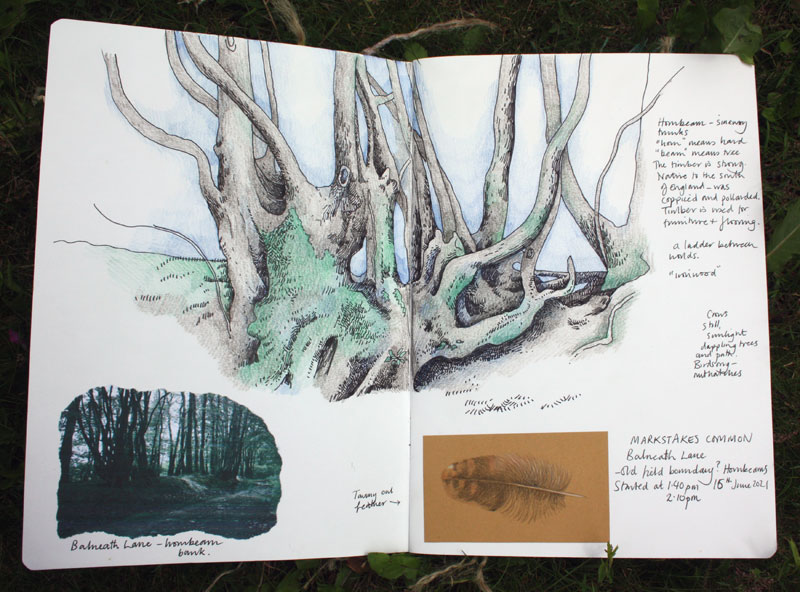
I might write more about my walks another time and possibly post more sketchbook pages as I do them. For now, I’m enjoying diary writing. I have a stump at the bottom of the garden near the fox earth I call my ‘Diary Stump’. It’s in among the vegetation – mainly brambles and cleavers – in among the green. I sit listening to birds, watching bees and the clouds skud over, bathing in green.
Scientists say women see more greens than men and we both see more greens than any other colour. Is this a legacy of our deep past in the forest?
Here is the route down the garden and a photo of my ‘Diary Stump’:
